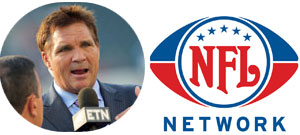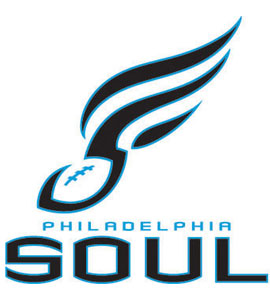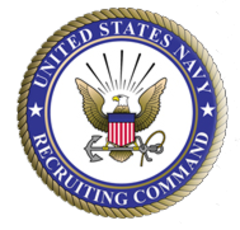RADNOR’S FOOTBALL LEGACY LIVES ON
Al Thompson
 Radnor’s standout two-way lineman Alex Andersen poses in front of the school’s athletic Hall of Fame Wall of plaques that features former Radnor running back Ted Dean who helped the The Eagles win their last championship in 1960.
Photo by Todd Bauders/
contrastphotography.com
Radnor’s standout two-way lineman Alex Andersen poses in front of the school’s athletic Hall of Fame Wall of plaques that features former Radnor running back Ted Dean who helped the The Eagles win their last championship in 1960.
Photo by Todd Bauders/
contrastphotography.comRadnor’s standout two-way lineman Alex Andersen is finishing up his career for the Raiders over the next few weeks.
The 6-foot-2, 270-pounder then plans to start his college career as a center for the University of Pennsylvania Quakers.
Andersen is leaving some serious football folklore behind and may not yet realize he is entering an even higher level of gridiron tradition as he starts his college career.
“It (high school career) flew by really fast,” Andersen said. “As we get down to the last few games, you never really realize that it ends eventually.”
How many of us have strolled down the corridor of a high school – not just your high school – and passed by the trophy case or a group of plaques placed together on the wall and actually stopped and read the names and accomplishments of students in many areas life?
Probably not very often.
These places of honor for the school’s past are there to remember those who were not only standouts while at their school, but went on to make an impact in the world of entertainment, politics, education and athletics.
Radnor High School has been around since 1893 (according to its website) and has produced its share of great people including many standout football players and coaches including Emlen Tunnell (1942) who went on to a Hall of Fame career in NFL, Chris Sydnor (81), who went on the play for Penn State’s National Championship team in 1982 and then the NFL, and Jules Prevost (20) who led the Raiders as a player (1917-19) and as a coach (1926 to 1958). The current stadium is named after Prevost.

Radnor captains TJ Hockersmith (24), Andersen and John Lord. Photo by Todd Bauders/
contrastphotography.com
For Eagles fans the most interesting Radnor football alum would be former Raiders standout running back Ted Dean (56).
Dean was drafted by the Eagles in 1960, led the NFL in kick returns and helped the Birds win their last NFL championship defeating the Green Bay Packers 17-13. Dean scored the winning touchdown with just over five minutes left in the game. He set up the five-yard TD run with 58-yard kick return after the Packers took a 13-10 lead with 13:07 left in the game.
Dean, for a myriad of reasons is largely forgotten by Eagles fans despite his championship plays…unless you yourself are a Raider.
“I knew he was a great athlete at Radnor, he’s on our Wall of Fame,” Andersen said after a recent practice. “You always know when there’s a player who played for the Eagles and our high school too.”
The Raiders also seem to be able to produce outstanding players that go on to play both at the FBS and FCS levels, in particular lineman, ever since current head coach Tom Ryan and line coach Dave Booth took over in 2007.
Some of the players include Dave Bowen, a junior at Boston College, Mike Staples, a sophomore at Cornell, and Greg DiCocco, a junior at the Citadel.
Andersen says it is an in-house tradition for older linemen to mentor and coach younger blockers.
“I feel like the lineman, they always take the younger guys under their wing,” said Anderson, who said he was mentored by DiCocco and Bowen. “And teach them the ways of being a good offensive lineman so that when they are older, when they are juniors and seniors they are ready to step up and fill those roles.”
If you watch Andersen on the field – and he rarely leaves it – it is easy to see his teammates looking to him on both sides of the ball to see what to do each play.
Andersen was asked if he likes the role of a leader.
“Definitely,” Andersen said. “Getting playing time early as a freshman, then coming in as a sophomore, the experience really helped. I kind of felt like one of the guys early so I just got into that leadership role early.”
Ryan talked about Andersen’s impact as a player at Radnor.
“Alex Andersen is a born leader,” Ryan said. “He is a positive role model for The Radnor Football Program. Alex gives his best every day at practice, in the weight room and of course every game. Alex will be missed as a player, but more as a person!”
Andersen will take his leadership skills as well as his center skills to Penn with the idea of having a good career. One of his challenges will be his size. Even at the FCS level, Andersen is undersized. He will need to rely on his technique and football IQ to crack the starting lineup.
“That’s the thing of the Ivy League, all the kids that might be a little undersized to play big-time D-1 have the opportunity to go and get an elite education,” Andersen said. “While still playing good, quality football.”
Andersen looked at Eagles backup center David Molk as a player who overcame size issues to play in the Big Ten and land a spot and play in the NFL. Molk is listed at 6-1, 290, not all that different than Andersen.
“Molk has been filling in for (Jason) Kelce and he’s only like 6-foot and a half (inch) maybe 6-2,” Andersen said. “And he made it.”
Molk took a minute after a recent practice to give some words of encouragement to Alexander after he heard about his size issues.
“Because of what I’ve gone through and the journey I’ve had to take to get here, understand for [Alex], my advise for him..understand what you love, and you love it, you’ll never stop,” Molk said. “And it’s because of my size issues, just doing what everyone else does, you’ll never get anywhere. And doing a little more than everyone else does, you might get a little further, but it’s an endless, tireless journey to do everything perfect. That’s the only way.”
At Penn, Andersen will be part of a football legacy that goes back the infancy of the NFL and the Eagles.

Eagles co-founder and head coach Bert Bell (left) with Penn teammates Ben Derr (center) and Joe Berry in 1916. Bell led the Quakers to the 1917 Rose Bowl. Photo from Wikipedia.
Bert Bell and Lud Wray both played football and were teammates for the University of Pennsylvania. Bell and led the Quakers to the 1917 Rose Bowl (Penn lost to Oregon of all teams).
Bell and Wray were the original owners of the Philadelphia Eagles. Bell and Wray were friends who after their playing days at Penn were over, competed on club teams such as the Union Club of Phoenixville (1920) and the Union Quakers of Philadelphia (1921).
Bell and Wray took turns coaching the Eagles with no success at all compiling a combined record of 19-65. But Bell went on to have an impact on the sport that is still being felt today, not only in the NFL but in every professional sport.
Bell was the National Football League (NFL) commissioner from 1945 until his death in 1959. As commissioner, he introduced competitive parity into the NFL to improve the league’s commercial viability and promote its popularity, and he helped make the NFL the most financially sound sports enterprise and preeminent sports attraction in the United States.
He was posthumously inducted into the charter class of the Pro Football Hall of Fame.
Andersen said he was not aware that Penn football was such a part of the history of the Eagles and the NFL itself.
“I had not idea,” said Andersen, who during this interview brought up that the Heisman Trophy is named after John Heisman, who played at Penn in 1890–1891.

Former Radnor great Ted Dean (56) who in 1960 scored the winning touchdown in the Eagles 17-13 win over the Green Bay Packers. It was the Birds last NFL title.
Andersen is no doubt proud of his career at Radnor. But as a soon-to-be alumni of the football team, he would like to see the Raiders regularly contend for the Central League title and a berth in the state playoffs. Andersen was asked how that goal can be accomplished.
“I think one big step was getting the youth program in, which we did last year,” Andersen said. “I think the youth program is now in its second year now, if I’m right. They have a ‘Young Raiders” football team…that just really just teaches the kids football from day one. I never had that growing up.”
Andersen’s legacy goals?
“I’d like to leave a good legacy at Radnor and represent Radnor well while I am up at Penn,” Andersen said. “And maybe leave a legacy there as well.”
If Andersen follows in the footsteps of his Radnor predecessors, the Quakers are in for a treat.













